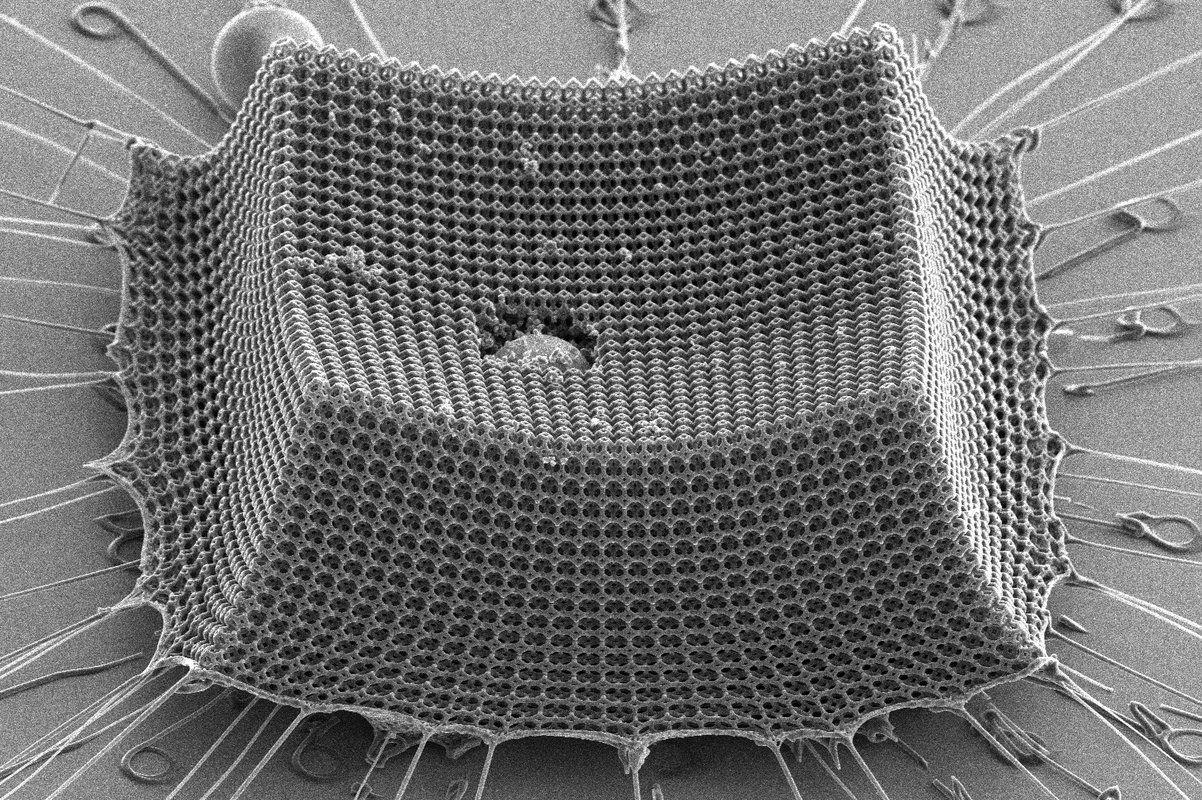The
Institute for Soldier Nanotechnologies (ISN), made up of the
MIT,
Caltech,
ETH Zurich and the US
Army Research Lab, has used 3D printing technology at the nanoscale to form a material that is reportedly more effective at stopping a projectile than Kevlar or steel.
Thinner than a single human hair, the material is made from tiny carbon struts that form interconnected tetrakaidecahedrons – structures with 14 faces – that are fabricated via two-photon lithography.
According to the team, the nano-architected material could potentially replace kevlar for a wide array of bulletproof protective gear used by the armed forces.
According to Julia Greer, Materials Scientist at Caltech, “the knowledge from this work could provide design principles for ultra-lightweight impact-resistant materials for use in efficient armor materials, protective coating, and blast-resistant shields desirable in defense and space applications.”


 Vähän överiksi mennyt tuotesijoittelu.
Vähän överiksi mennyt tuotesijoittelu.

